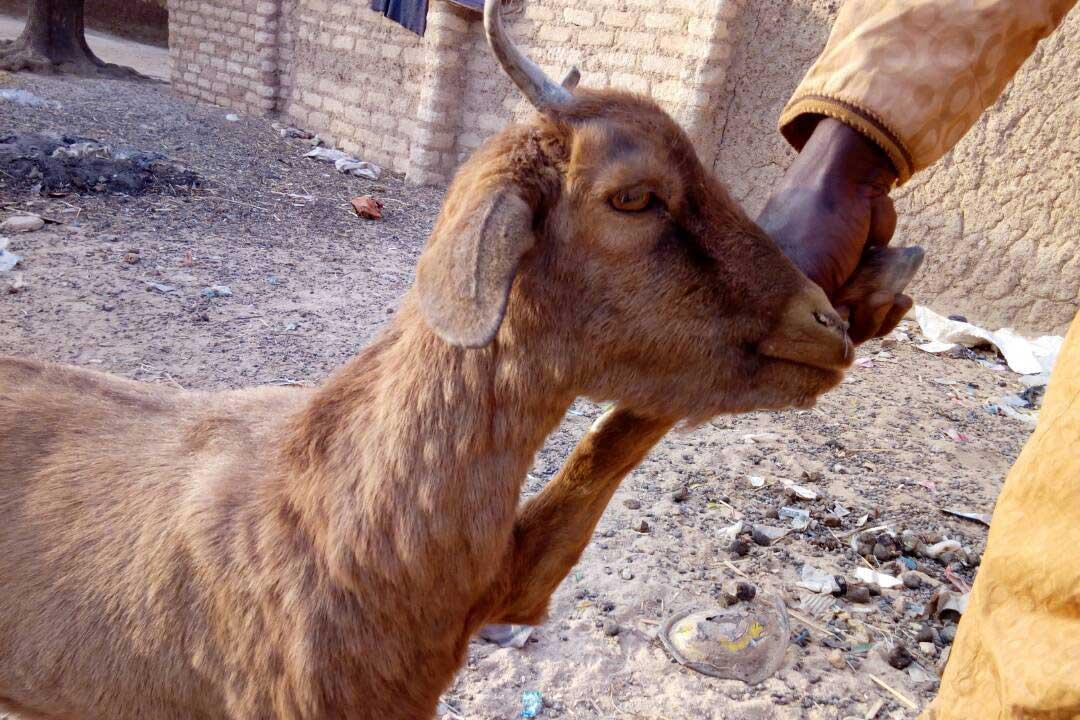Researchers from The Pirbright Institute recently journeyed to Nigeria as part of their collaboration with Bauchi State College of Agriculture, which focuses on understanding sheeppox and goatpox in order to reduce their impact in low and middle income countries.

Goat displaying clinical signs of goatpox. Image courtesy of Dr Ahmed Abdulkadir Gamawa, Bauchi State College of Agriculture. Sheeppox and goatpox (SGP) are caused by infection with poxviruses. The two diseases are found throughout large parts of Africa and Asia and occasionally enter Europe. They can cause significant mortality in sheep and goats, resulting in substantial hardship to farmers in regions where smallholder farming is a large source of income and food. However, few studies have directly addressed the economic impact that SGP inflicts.
Pirbright scientists Dr Georgina Limon-Vega and Dr Nick Lyons visited collaborators led by Dr Ahmed Abdulkadir Gamawa at Nigeria’s Bauchi State College of Agriculture to examine the SGP data collected from nearly 80 farms. This is the first data set generated for SGP in Nigeria, and the results will be used to strengthen support for controlling this important disease in the region.
As part of the collaboration, Dr Limon-Vega and Dr Lyons also provided training to the local researchers, where they demonstrated the most efficient methods for creating SGP studies and how to analyse the data once it had been collected. Embedding these skills with local scientists will strengthen the information available in countries where these high impact diseases occur, bolstering their ability to tackle outbreaks in a strategic way.
Dr Nick Lyons said: "There is a lack of published data on the economic impact of many viral livestock diseases, yet this information is essential for informing policy and allocating scarce resources for disease control. The results of this study will help quantify the farm level economic impact of SGP, which will assist the Bauchi State Government in making these decisions.”
This research was funded by an Impact Acceleration Account from the Biotechnology and Biological Sciences Research Council (BBSRC), grant number BB/GCRF-IAA/17, extension grant reference BB/GCRF-IAA/17/17.
